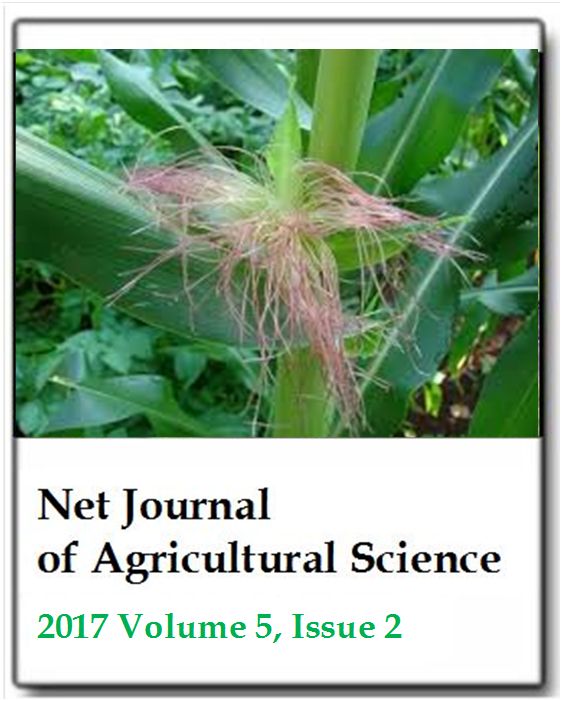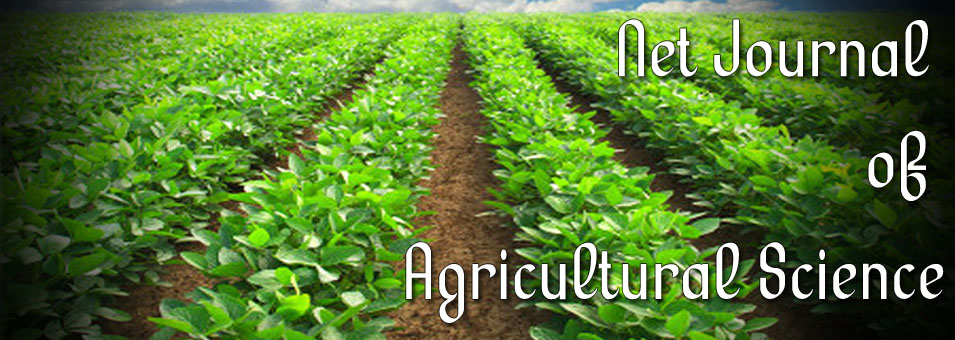Effects of different tillage methods on maize (Zea mays L.) root development in andosol
Dayou E. D., Zokpodo B. L. and Rakoto B.Net Journal of Agricultural Science
Published: April 10 2017
Volume 5, Issue 2
Pages 23-30
Abstract
Ploughing can modify or destroy the physical properties of the soil and influences crop root development. This study aimed to understand the effects of four different tillage methods on maize root development in an andosol. Ploughing depth, soil refinement, root extension and root development pattern of maize were the main parameters observed. The treatments were arranged in random complete block with three replicates. The software Rstat was used to do analysis of variance on the data. It was noted that ploughing with animal traction facilitates more maize root development both lateral and vertical, followed by tractor ploughing and then with the cultivator. Ploughing with the tractor offers the largest area of root concentration. In addition, the number of fine roots for all ploughing, with the exception of manual ploughing, is increased beyond 20 cm. The relationship between apparent soil density and the number of roots developed by maize is non linear with a threshold at which root density becomes inversely proportional to the apparent soil density. Thus, in each horizon 10 cm thick to less than 30 cm deep, the maximum number of root about 67 roots is reached when the apparent soil density is closed to 9.8 ± 1.0 kN/m3.
Keywords: Tillage, root, maize, andosol, Antsirabe-Madagascar.
Full Text PDF
ISSN: 2315-9766
